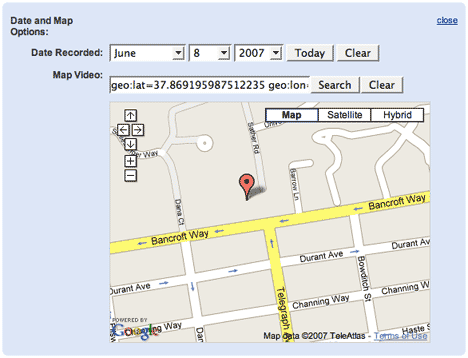One of the highlights for me of ISDE5 a few weeks ago was the portable domes on display in the exhibition hall. Made by Elumenati, they use a special fisheye lens system to project onto a half sphere or quarter sphere (depending on the type of dome). The Minnesota Planetarium Society had a large one, and NOAA had a smaller one on display. I took video of both with my N95:
Here’s the “narration”:
First up, NOAA’s dome, which is showing Google Earth. The person driving it with a big grin on his face just happens to be Google’s own Brian McClendon. (Interesting side note: NOAA used it primarily to show off its Second Life project. The open-source Second Life client was altered to compensate for the distortions of projecting onto a curved surface; that’s not possible with Google Earth right now, so it looks a bit warped in the video)
Then, the larger dome. Inside, the Minnesota Planetarium Society ran UniView, a really impressive universe simulator produced by Swedish company Sciss AB. I could have sat in that dome all day — UniView + an Elumenati dome is like Celestia on crack. (Not that I’ve ever tried it. Crack, that is.) (BTW, a lot of UniView’s data comes from and is available as a free download (with a multiplatform viewer) courtesy of the Hayden Planetarium.) What I found interesting was UniView’s ability to show a rendition of the magnetosphere — that’s pushing the envelope when it comes to visualizing Earth, and provides a taste of where digital Earths may be headed in the future.
PS: Every video uploaded to YouTube now presents you with a spiffy georeferencing option:

That YouTube layer for Google Earth really cannot be too far away.
PPS: The current edition of the IEEE’s Spectrum magazine has a great article on Elumenati’s domes, and how they are being used to make science come alive to jaded video-game addled schoolkids.